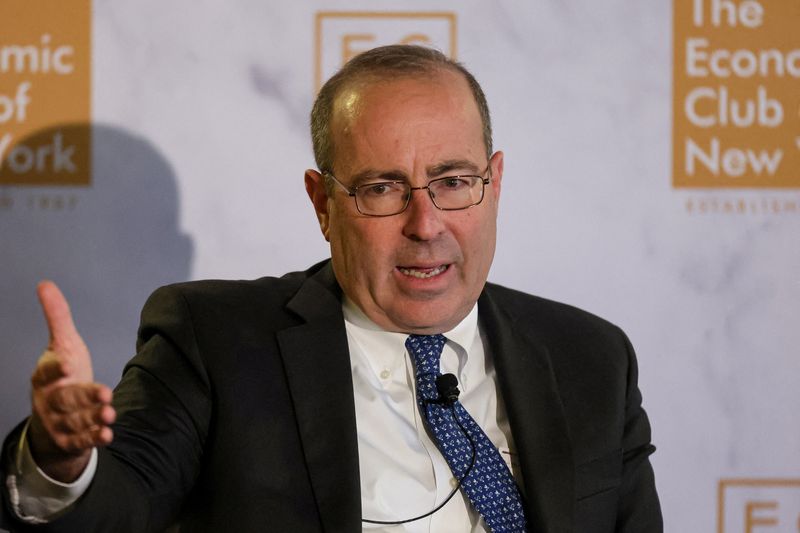By Howard Schneider
WILMINGTON, North Carolina (Reuters) – The U.S. central bank’s half-percentage-point interest rate cut last month was an acknowledgement that its policy rate was “out of sync” with where the economy stands, but shouldn’t be taken as a sign that the battle with inflation is finished, Richmond Federal Reserve President Thomas Barkin said on Wednesday.
With inflation falling and unemployment around what is considered its long-term sustainable rate, “the number that now seemed out of sync was the fed funds rate, which no longer needed to be as restrictive given the progress that’s been made,” Barkin said in remarks prepared for delivery to a University of North Carolina Wilmington economic conference.
Projections of a further half percentage point of Fed cuts over the rest of the year further “takes a little bit of the edge off,” he said.
Barkin, a voter on the Fed’s interest rate policy this year, supported the half-percentage-point cut delivered by the U.S. central bank on Sept. 18.
The Fed is expected to cut rates by a quarter of a percentage point at its Nov. 6-7 meeting, a move that would lower the benchmark rate to the 4.50%-4.75% range. Before that meeting, the U.S. government will have released the employment reports for September and October and inflation data for September. Fed policymakers also will have to assess any fallout from a strike this week that closed ports on the U.S. East Coast and Gulf Coast, and also what risks may be posed by the intensification of conflict in the Middle East.
‘LEARN AS WE GO’
Barkin said he remains cautious about inflation amid continued strong economic growth, and said he felt there were conditions in which the job market could grow tighter rather than weaker in the months ahead.
“There is still work to do on inflation,” Barkin said, noting that the personal consumption expenditures price index stripped of volatile food and energy items, or core PCE, is still at 2.7%. He said he does not expect it to decline much more until next year.
The Fed targets an annual headline inflation rate of 2%. The core PCE figure is considered a guide to how the headline rate will behave in the future.
Barkin said that while some aspects of the economy make it seem that “disinflation” will continue, “it remains difficult to say that the inflation battle has yet been won.”
Recent rate cuts could stoke demand for big-ticket purchases like homes and cars, he said, and “there is a risk that demand is stimulated in excess of supply.”
U.S. labor unrest and geopolitical conflicts could also push up prices.
Additionally, the job market may move in unexpected ways, Barkin said. While much of the Fed’s discussion has been about preventing the current 4.2% unemployment rate from rising further, Barkin argued that if the economy continues to grow and demand increases, “employers running lean could well find themselves short” of workers and need to hire.
“As we decide how fast to move and how far to go during this rate-reduction cycle, we are just going to need to be attentive and learn as we go,” he said.

